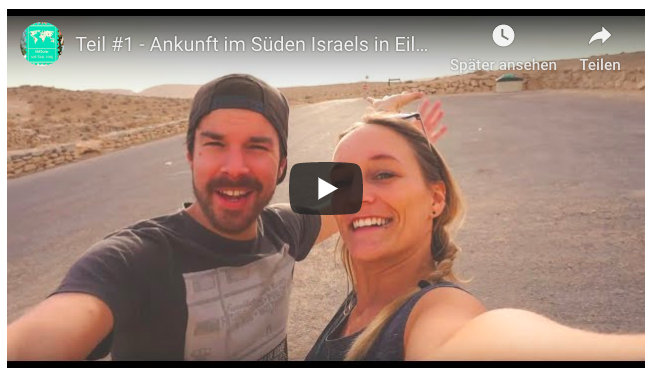Eilat is the southernmost city in Israel and is located directly on the Red Sea. You can vacation here year-round; it almost never rains, and temperatures reach up to 28 degrees Celsius even in December. Eilat is a popular and well-developed tourist resort that has largely been spared from terrorist attacks in the past.
The sea, in particular, is considered a diving paradise due to its clear water and colorful and diverse underwater world. Here you’ll find beautiful beaches, numerous restaurants, clubs, an adventure park, shopping opportunities, water sports, and entertainment. However, we would describe Eilat more as a kind of entertainment hub in Israel. Huge, unmistakable hotel complexes line the coast, waiting for the next package holidaymakers.
In summer, many hotels are fully booked, but in winter, you can still find affordable accommodations and rooms. We still recommend booking your accommodation in advance. We’ve compiled lots of Eilat tips and information for you so you’re well prepared for your trip. Enjoy browsing!
What else you should know:
- Best time to travel to Israel
- Currency & Money Israel
- Driving in Israel
- Drone flying & Laws
- Entry & Israel Visa
- Safety in the country
- Costs of a trip to Israel
- Reasons for a trip to Israel
- Tel Aviv Highlights & Tips
- All about Jerusalem
- What else you should know:
- 1. Getting to Eilat
- 2. Entering Eilat
- 3. Airport transfer
- 4. Booking a rental car in Eilat
- 5. Currency and money
- 6. Eilat tips – By bus
- 7. Booking accommodation in Eilat
- 8. Safety in Eilat
- 9. Food and drink
- 10. Shopping
- 11. Eilat tips – Beaches
- 12. Local activities
- 13. Excursions in the surrounding area
- 14. Excursion to Jordan or Egypt
- Conclusion about Eilat
1. Getting to Eilat
Eilat Airport, which is served by various airlines, is located directly in the city. From Germany, you unfortunately have to travel via Tel Aviv to get to Eilat. A new airport near Timna (Ramon International Airport Eilat) was originally planned for 2017, but it probably won’t open until spring 2018. Since October 2017, it’s been very affordable to get to Ovda, a town just 60 km north of Eilat. Low-cost airlines Ryanair and Wizzair land here. This is how we arrived.
Update 11/2019: Flights to Ovda are currently no longer available, as the Ovda military airport is permanently closed. However, Ryanair now offers flights from Berlin-Schönefeld to Eilat (ETM). This is a cheaper alternative to the usually more expensive flights to Tel Aviv. It’s also probably the cheapest way to get to the Red Sea from Germany. The flight time is only between 4 and 4.5 hours.

From Eilat, you can fly to Tel Aviv. The flight takes just under 45 minutes and costs from €45 with the airline Arkia. Flights from Tel Aviv to Eilat depart from Terminal 1. There are free shuttles available. From Israel, you can also travel to Poland, Romania, Belgium, Cyprus, Slovakia, Bulgaria, Italy, Hungary, Greece, and the Netherlands very cheaply.
2. Entry into Eilat
Generally, you do not need a visa to travel to Israel. With a valid passport, you can usually get a 90-day residence permit directly at the airport. There are no longer any stamps; you’ll receive a blue entry card, which you should keep safe. You’ll need to show this upon departure and receive a red exit card.
Don’t be surprised if officials ask you a lot of questions upon entry and exit. For security reasons, you’ll be scrutinized quite closely. If your passport also has stamps from Arab countries, you’ll be scrutinized even more closely. Marco, for example, was asked how long he was in Dubai and what he did there. More on this topic here: Entry into Israel & Visa.
3. Airport Transfer
There are several options for getting to Eilat city center. You can book your transfer ticket in advance via the EILATSHUTTLE website. A one-way trip costs around €7 to €8 per person and takes around 40 minutes. The bus stops right in front of the small airport building. These shuttles take you directly to your accommodation, which is certainly quite convenient.
In addition to the shuttle, there are also public buses operated by the Egged bus company, which depart from the airport around 60 minutes after a flight arrives. Line 282 is also operated on holidays and Shabbat; a ticket costs 21.50 shekels per person (around €5). Line 392 also goes in that direction, but doesn’t stop in front of the airport building, but rather on the main road just outside. From there, you have to walk a further 10 minutes to the airport.
We tested both options in advance and can recommend both. The Egged buses even have Wi-Fi, are air-conditioned, and comfortable. These buses depart from the central bus station in Eilat, just a 5-minute walk from the city airport. It’s best to check the departure times the day before your departure. These always depend on the departures from Ovda Airport. Our return flight departed at 12:20 PM. The bus to the airport left at 9:05 AM. The timing worked out perfectly.
4. Booking a rental car in Eilat
There is no rental car station in Ovda itself; you can only find one in Eilat itself, directly at the city airport. We booked our car in advance via www.billiger-mietwagen.de*. We were able to pick it up from the “Budget” rental car company across from the city airport. For a week, we paid only around €18 a day, including all essential insurance (no deductible, fully comprehensive, and a fair full-to-full fuel policy).
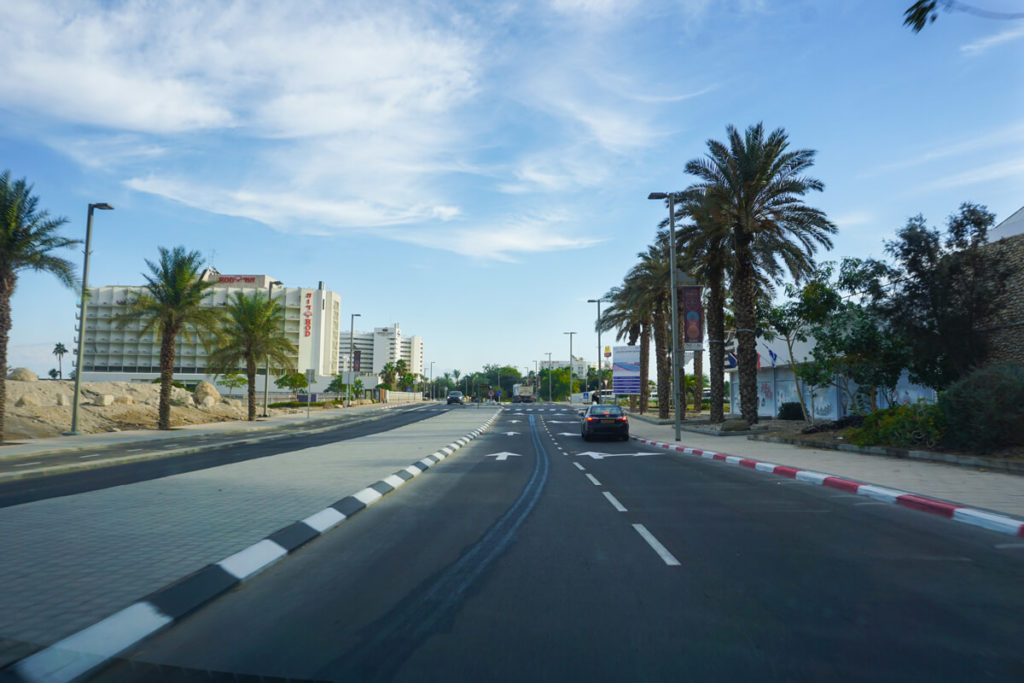
For the first time on our travels, we weren’t pressured into any additional insurance; everything went smoothly and quickly. With Budget, we also “only” had to pay an $800 deposit (depending on the company, between $500 and $1,500). So make sure your credit card limit is adjusted accordingly. And before you continue your journey from Eilat, be sure to fill up the tank again. For one thing, the distances from Eilat are a bit longer, and for another, gasoline is significantly cheaper in Eilat (free trade zone).
Parking in Eilat: In Eilat, all parking zones are marked in white/blue along the side of the road. With a valid parking ticket, you can park there for as long as you like. In most cases, you can even park there for free between 7:00 PM and 8:00 AM. You pay around 5 to 8 shekels per hour; a full day costs 25 shekels. This ticket is then valid throughout the city.
5. Currency and Money
In Israel, you pay with the Israeli shekel. Currently, you get around 4 shekels for 1 €. Prices are similar to those in Germany, but some things are even a bit more expensive in Israel. We recommend withdrawing cash from an ATM (cash machine) using your credit card. You can find these ATMs practically everywhere (airports, banks, shopping malls, kiosks, directly on the street, and much more). We were charged a fee of around 7 shekels each time. You can withdraw money for free in Israel with a corresponding credit card. A Santander Bank credit card is a very good option. Fees abroad are always reimbursed.

6. Eilat Tips – By Bus
In Eilat, there are various bus lines that connect the rest of the country with the southern region. Buses depart and arrive at the Central Bus Station near the city airport. From Eilat, you can reach virtually all of the country’s major attractions. You can view all departure times on the Egged website or inquire at the train station.
For example, line 444 runs four times a day to Jerusalem; a single trip costs only 78 shekels (€20). This bus also stops in Ein Gedi and Masada (47 shekels/€12). Bus line 392 takes you to Mitzpe Ramon for just 44 shekels (€11). The journey takes about three hours. You can even travel from Eilat to Tel Aviv or Haifa. The journey takes five to six hours and costs only 78 shekels (around €20).
7. Book Accommodation in Eilat
Israel isn’t exactly the cheapest country, as you’ll notice when looking for suitable accommodation. And of course, you can expect to pay a little more here on the Red Sea, as the place is very popular and touristy. We booked our room through Airbnb and only paid around €30 per night. The room was clean and adequate, and the owner, Martin, was very nice and helpful. He even served us a simple breakfast in the morning and provided us with snorkeling goggles (click here for our accommodation in Eilat).
In Eilat, there’s the Little Prince Hostel, which has solid reviews. Here, you can get a private room starting at around €40 (depending on the month). A quadruple room starts at €70, which works out to just €17.50 per person. The Motel Aviv and Custo Club are also quite well-reviewed; you can book a private room for two people for around €47. Very good 4-star hotels start at €115 per night and up (e.g., Astral Maris Hotel or Isrotel Yam Suf Hotel). As always, there are almost no limits when it comes to 5-star hotels!
As you can see, prices are generally quite high in Eilat. Therefore, it’s worth looking at platforms like Airbnb. Couchsurfing is also absolutely no problem in Israel. We originally only wanted to couchsurf in the country, but unfortunately, due to the holidays (Hanukkah), we didn’t receive any positive feedback from the hosts, so we quickly booked a few accommodations shortly before departure (we didn’t have much choice).
8. Security in Eilat
The last assassination attempt in Eilat was in 2007. Thanks to security checks, the expansion of the border fortifications, and the border fence with Egypt, the situation has been less problematic since then. You have to pass through a metal detector at the airport, as well as in the large shopping malls. Bags and backpacks are checked here for security reasons.
In general, you should act and travel with common sense here as well. Always keep an eye on your belongings and, above all, never leave your luggage unattended. We never felt uncomfortable or unsafe in Eilat or the entire country. You can find everything about safety in Israel in our separate blog post here!
9. Food and Drink
In Eilat, you’ll find something for every taste. Whether falafel and hummus, pizza, burgers, hot dogs, fish, or shawarma—you can find it all in Israel, too. For a quick snack, you should budget at least €5, if not more. A meal in a restaurant costs considerably more. Ideally, budget €15–20. You’ll also find small kiosks everywhere where you can buy essentials. A bottle of water (1.5 liters), for example, costs around €2 to €2.50. There are also regular supermarkets where you can buy food and drinks. Here, too, everything is a bit more expensive than in Germany.
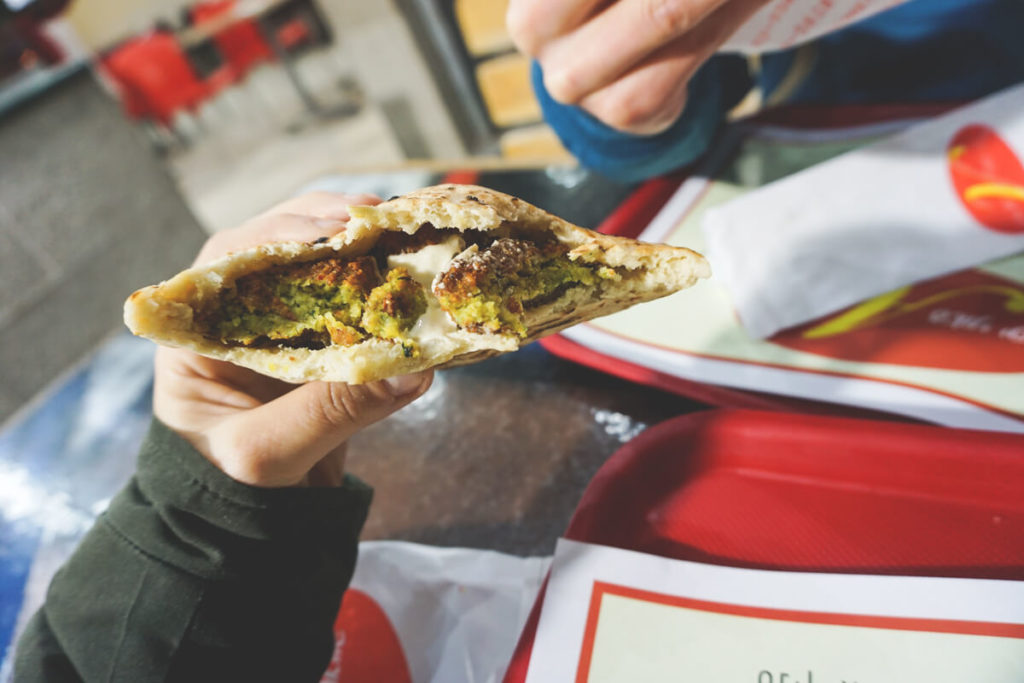
10. Shopping
Eilat was declared a free trade zone in 1985, thus eliminating the high Israeli VAT. In the large shopping malls (Hayam Mall, Mega in the City Mall, Big Mall), you’ll find virtually anything your heart desires. Along the beach promenade near the luxury hotels, there are also numerous shops and boutiques from well-known brands. Here you’ll find the best addresses for shopping.
11. Eilat Tips – Beaches
Here on the Red Sea, there are, of course, numerous beaches. Particularly popular are Coral Beach (Coral Beach Nature Reserve) and Dolphin Reef Beach. At Coral Beach, you can snorkel and dive directly on the coral reef. You can also rent equipment there if you don’t have any equipment with you. Sun loungers are available on the beach itself, and the shop sells snacks and drinks. The variety of colorful fish that can be seen on the reef is particularly impressive. The entrance fee is around €7.50.
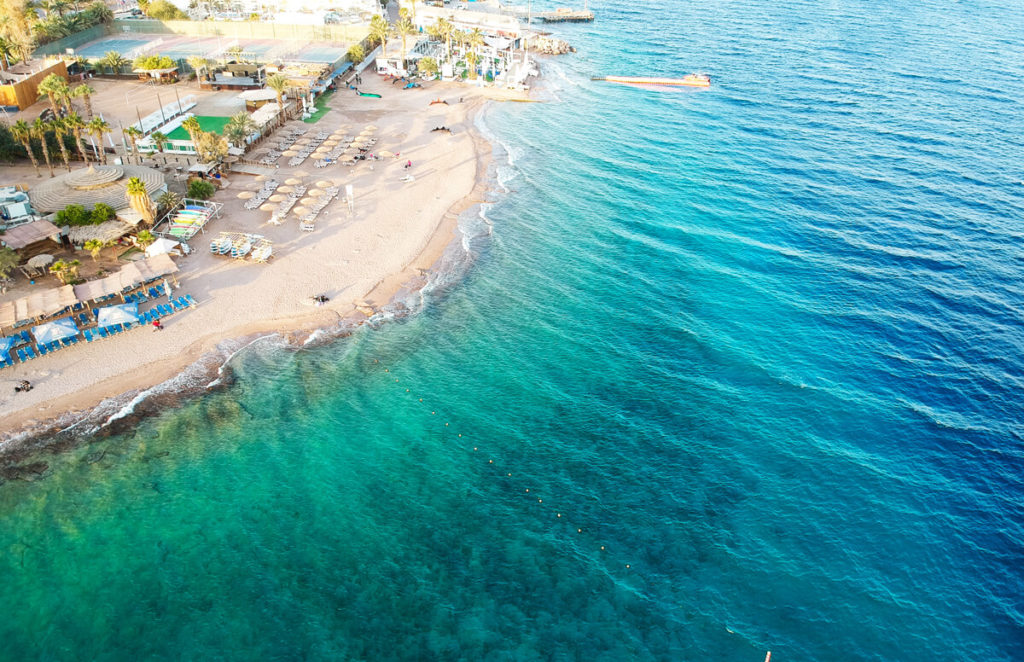
Just under 1 kilometer further toward the Egyptian border, there’s a section of beach that’s free and accessible. Here, you can also marvel at the amazing underwater world and save a whopping €7.50. Dolphin Reef Beach once housed dolphins, who still return here voluntarily. Dolphin therapy is also offered there, as well as diving and snorkeling with dolphins.
12. Local Activities
Probably the most popular activity in Eilat is diving. A spectacular underwater world awaits you here on the Red Sea. The most famous diving spot in Eilat is Coral Beach, which is also considered one of the best in the world. And of course, you’ll also find a variety of water sports in Eilat. Whether kite surfing, water skiing, stand-up paddling, parasailing, or windsurfing—you shouldn’t get bored here.
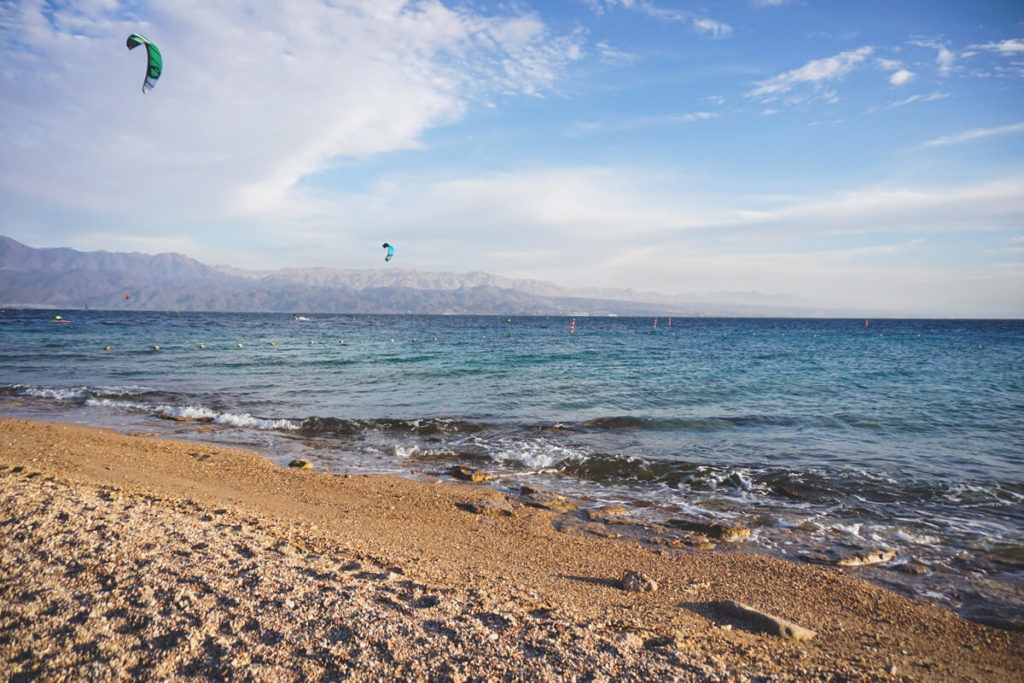
The Underwater Observatory Marine Park in Israel is located just a few kilometers south of the city. This park is arguably one of the most popular attractions in Eilat. Here you can see a tower standing in the sea, 100 meters from the shore and accessible via a walkway. Inside, you can marvel at the underwater world of the Red Sea (sharks, giant tortoises, and much more).
Shopping in Eilat is also very popular with many visitors, as it is considerably cheaper in this city than in other Israeli cities (see the section “Shopping”). From Eilat, you can take many excursions in the surrounding area. You’ll find out more about them in the next section.
13. Excursions in the Surrounding Area
The Red Canyon
The Red Canyon is located just 20 km from Eilat. This canyon is only 200 meters long, but is truly worth seeing. If you arrive before 10 a.m., you can have the place all to yourself. Numerous buses didn’t arrive until we got back to the car. Click here for our article about the Red Canyon in Israel.

Timna Park
Timna Park is located north of Eilat in the Arawa Valley. It is a nature park with truly impressive rock formations, ancient copper mines, and temples. Hai-Bar Yotvata National Park is also said to be truly beautiful. It is home to antelopes, oryx, wild donkeys, ostriches, birds of prey, and other desert animals. Entrance fee: 29 shekels for adults and 15 shekels for children.
Negev Desert and Ramon Crater
On your way through the Negev Desert, you will also pass the Maktesh Ramon Crater. It is the largest erosion crater in the world, measuring 40 km long and between 2 and 10 km wide. In the small town of Mitzpe Ramon, you have a wonderful view from the crater rim. It must be especially impressive here at sunrise and sunset. You can read all the information about our trip to the Negev Desert and the Ramon Crater here.
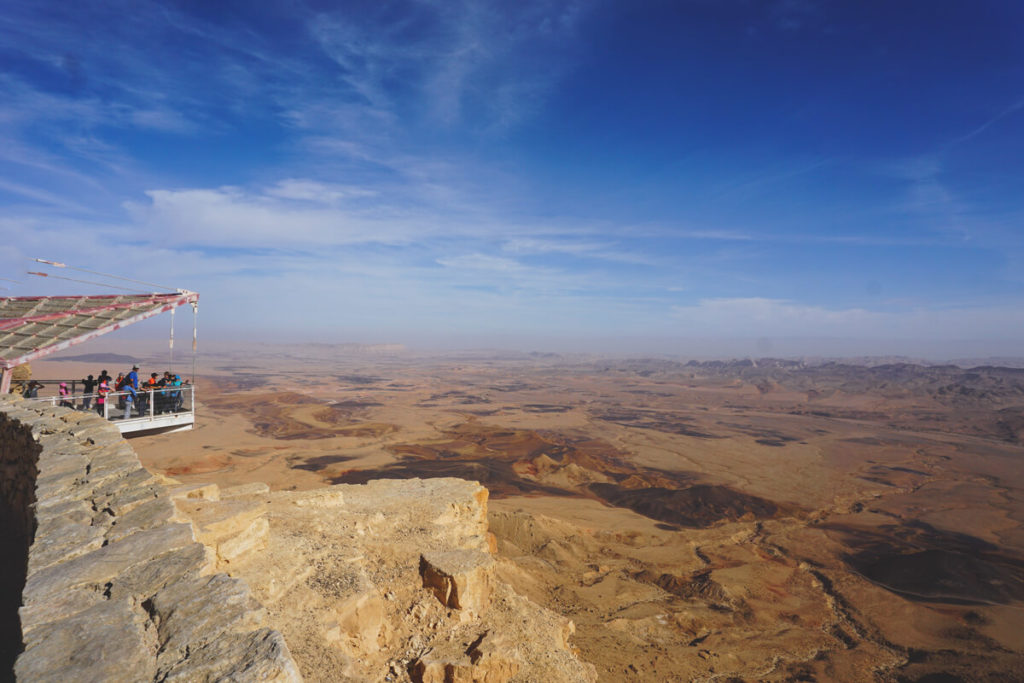
The Dead Sea
On the other side, heading north, you will inevitably pass the Dead Sea. And that’s exactly where you should definitely stop. A popular beach resort is located in En Bokek, where you can float in the salt water. On the beach, you’ll find showers, loungers, and a shop. You can also stay overnight in one of the many hotel bunkers. The salt content of the Dead Sea is 33%, while the Mediterranean Sea has a mere 3.8%. Crazy, right?
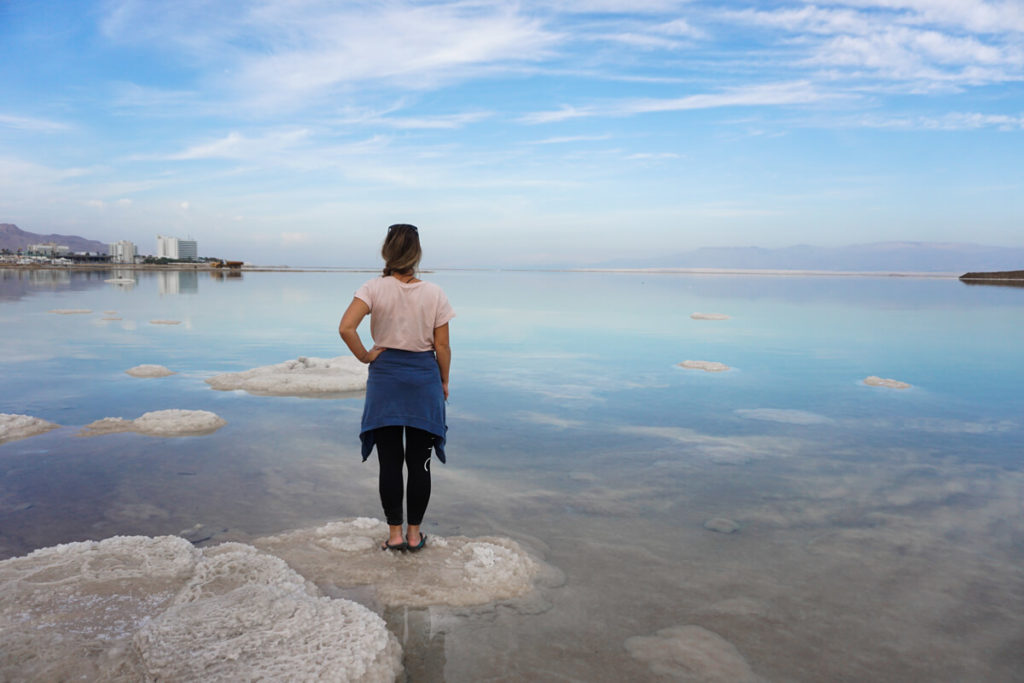
Just 30 km further north, you’ll pass En Gedi National Park. Here, you can hike through wonderful gorges (wadis), enjoy small waterfalls, and explore the occasional spring directly in the rocks. We were there too, unfortunately in the middle of the holidays. It was incredibly crowded, but still really beautiful. Once you leave the main attractions and continue climbing, there are hardly any visitors following you. This way, you can enjoy the view of the Dead Sea and the gorges almost entirely alone.
14. Trip to Jordan or Egypt
From Eilat, you can also travel to Jordan and visit the famous Rock City of Petra. We want to see this one day, but then travel directly through Jordan. There are various providers for day tours or multi-day trips. It’s best to get the Jordan Pass, which includes both the visa and entry to the Rock City of Petra. The Yitzhak Rabin/Wadi Arava border crossing is located between Eilat and Aqaba. Both countries charge an entry and exit fee. How about a visit to Egypt’s Sinai Peninsula? So many people have raved about it, and we, too, want to visit the Sinai Peninsula soon. The beaches and underwater world are said to be unbeatable. From Eilat, you can take the Egged Bus No. 15 to Taba. From there, you have to cross the border on foot. Superjet buses are waiting for you on the other side and take you to your accommodation. Israel charges an exit fee of 101 shekels. You can then stay on the Sinai Peninsula for 14 days.
Conclusion about Eilat
It was really cool that we only flew for 4 hours and arrived in the summer. While the snow chaos was in full swing in Germany, we were able to relax on the beach in Eilat with temperatures of 26 degrees and above. The city itself wasn’t particularly interesting for us, but there’s still an incredible amount to do in the surrounding area. You’ll find some delights, especially in the south of Israel, that will take your breath away every now and then. We would fly to Eilat again if we wanted to explore Israel. It’s also interesting that you can travel to Jordan and the Sinai Peninsula quite quickly from there.
